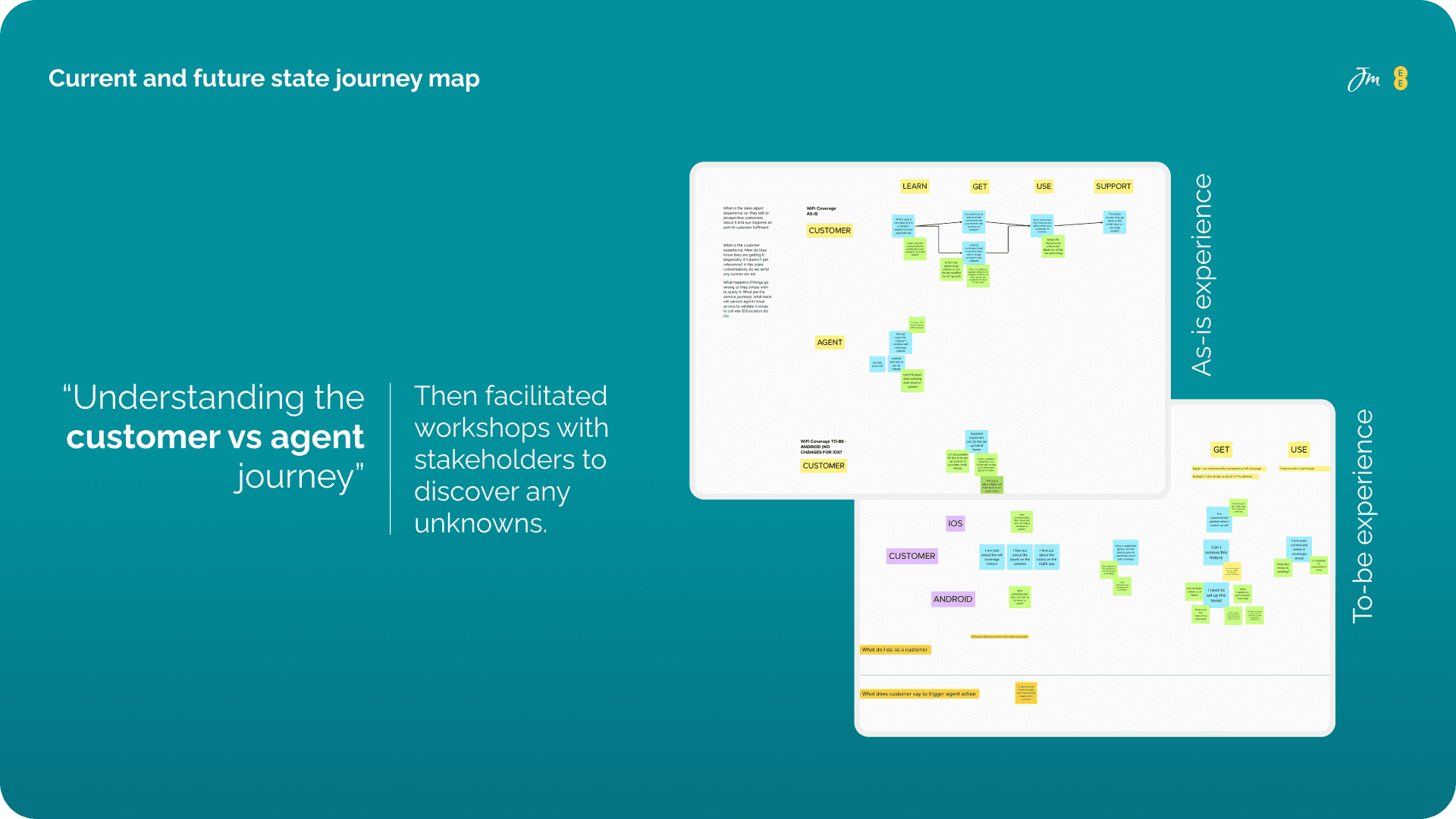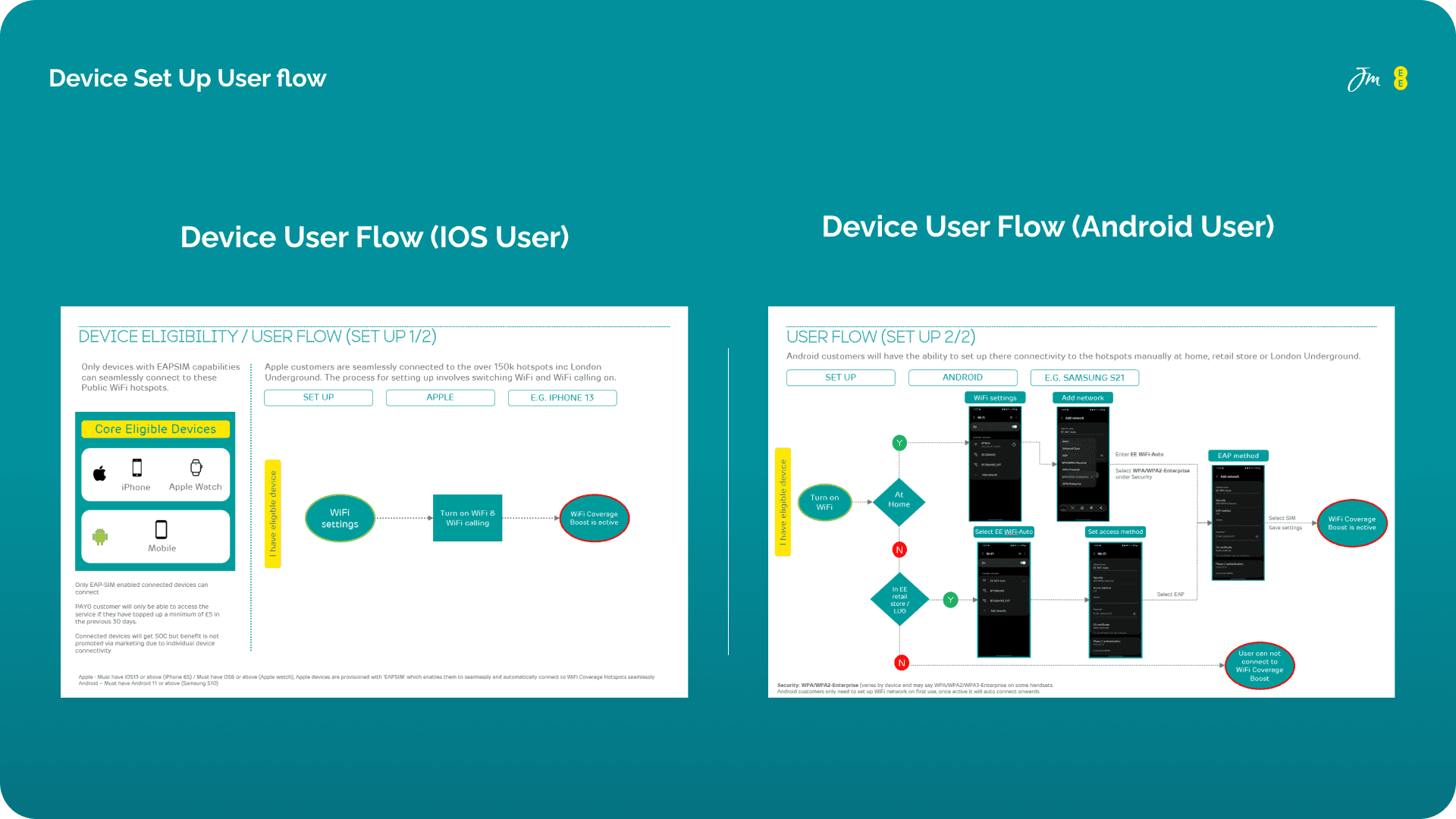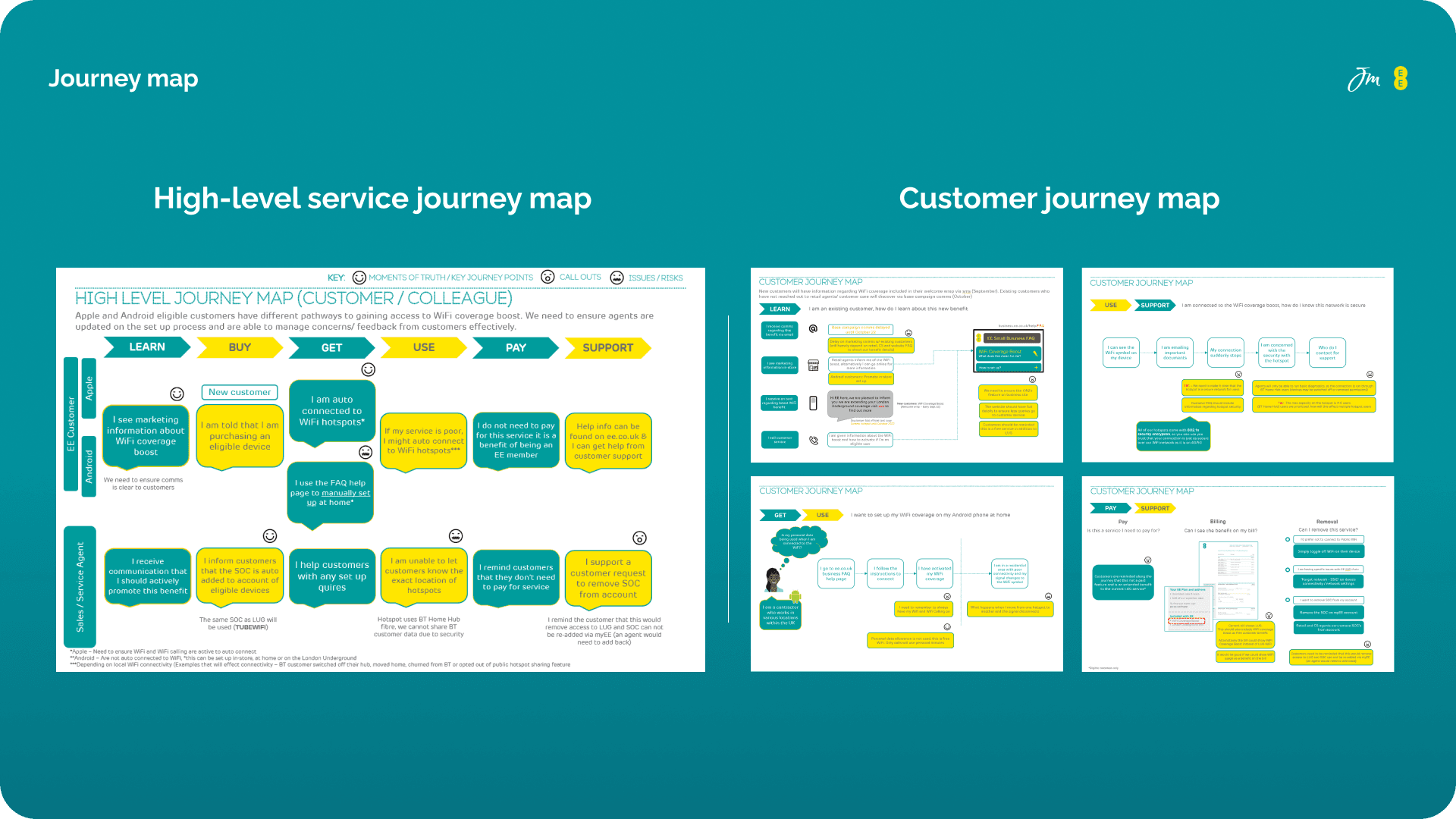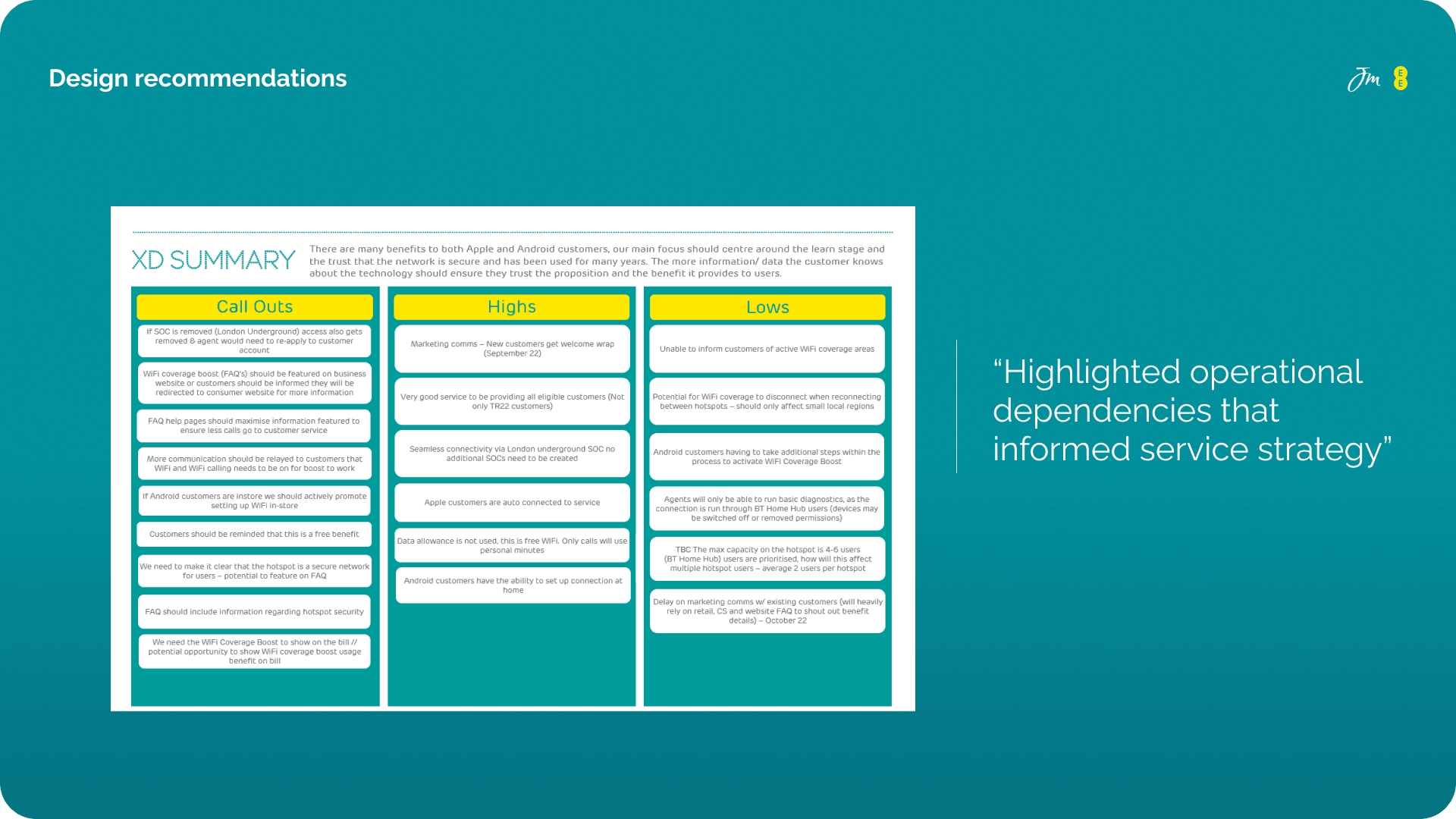EE
BT
Lead Service Designer
Enterprise
Lead service designer on a cross brand proposition between EE and BT designed to extend mobile coverage though BT’s WiFi network. I worked across propositions, operations and customer service to understand how the service functioned end-to-end. From network connection, authentication, customer communication and support.
TL;DR
Scroll down for full case study
- Designed a new service capability enabling customers to automatically connect to BT Home Hub WiFi when EE mobile coverage drops.
- Identified and visualised how the experience spans multiple systems (sales and support).
- Created future-state customer and agent journeys that informed both operational readiness and digital enablement.
- Delivered documentation and visuals that aligned propositions, service enablement, and tech delivery around a single service vision.
Understanding the service problem01
EE wanted to address customer drop-offs in connectivity when travelling through low-signal zones. This was reflected in NPS feedback and network analytics. The proposition was to allow EE devices to automatically connect to BT Wifi when EE signal was unavailable.
Mapping the current state and defining opportunities
I began by mapping the as-is service ecosystem, capturing the current service between EE’s mobile infrastructure and BT’s WiFi service. This made the hidden complexity visible and created a shared understanding across squads.Defining the service vision02
Designing for seamless coverage and clear ownership
The brief was initially positioned WiFi coverage boost as a “network extension’ but through analysis it was clear that a users set up experience would differ depending on if they was a IOS or Android user.
I facilitated working sessions with propositions and service agents to co-create the service vision.
I facilitated working sessions with propositions and service agents to co-create the service vision.
We aligned on three core design principles:
Continuity: Customers should experience uninterrupted connectivity wherever they are.
Transparency: The switching process must be invisible and automatic.
Accountability: Ownership must be clearly defined between EE and BT to ensure stable service and support.
From this I was able to define the to-be journey map, aligning on eligibility rules for EE mobile and BT broadband customers, and end-to-end behavioural model.
Designing the experience03
With the service principles defined, I mapped the end-to-end user steps using the ‘LBGUPS’ (Learn, Buy, Get, Use, Pay, Support) framework. This helped visualise how users discovered, activated and benefitted from WiFi Coverage Boost. Depending on the users action this could trigger system behaviours, in which network and customer care teams should support those interactions behind the scenes.
I built a high-level customer journey flow calling out key touchpoints, hand-offs, and moments of truth in each phase.
This allowed me to:
Highlight experience gaps where messaging, eligibility, or connectivity logic broke down.
Differentiate IOS vs Android set up nuances in the ‘Get’ and ‘Use’ phases.
Identity operational dependences that would later affect BA and engineering work.
Service readiness and implementation
I developed a scenario map detailing how customers and systems would respond in different connectivity and account states. The map became a bridge between design and delivery, enabling BA, service enablement teams to validate each flow technically and operationally.
Through a series of short walkthrough sessions, I was able to:
Reviewed scenario triggers to ensure data flow accuracy between EE and BT.
Defined ownership for connection failures and authentication errors.
Document dependancies for BA hand-off and backlog creation.
What success looked like04
Result and what happened next
- Delivered MVP with minimal ambiguity or dev blockers, despite technical trade-offs.
- Stakeholder praised the clarity of flow, especially around pass status visability.
Reflection05
- This project demonstrated that service design is the connectivity glue between infrastructure and customer experience.
- By designing ownership and accountability, I made an invisible technical feature to feel effortless to the user.





